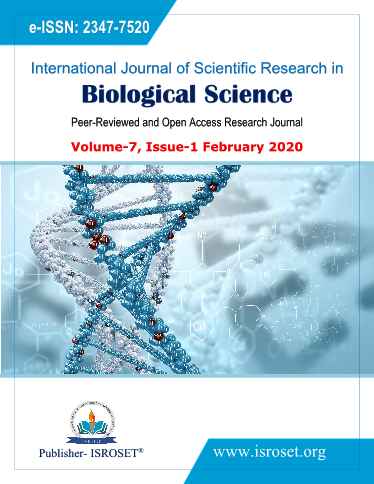Effect of Jawarish Bisbasa on dyslipidemia - A case study
Keywords:
Jawarish Bisbasa, Dyslipidemia, Hyperlipidemia, obesityAbstract
Dyslipidemia is characterized by abnormal levels of lipids in the blood. There is a strong association between serum cholesterol and risks of coronary heart disease (CHD). Lipoprotein disorders or hyperlipidemia may result from a primary abnormality in lipid metabolism or secondary manifestation of some other condition. In Unani Medical System (UMS) mentioned under the heading of Fart-e-Tadassum fid-dam, Fart-e-shahmeen fid-dam, etc. They also describe its types and management through change in lifestyle and Unani drugs. The present study is to analyse the antihyperlipidemic effect of Jawarish Bisbasa (JB) in a case of dyslipidemia. The patient was 28 years old had been diagnosed with dyslipidemia/hypercholesterolemia three months prior to presentation. The patient was treated 8 weeks with JB. His body weight (BW) was 94 kg, BMI 27.4 m2, WC 99 cm, WHR 0.91, SAD 28cm, BS(F) 87.31 mg/dl, serum cholesterol 223.9 mg/dl, Serum triglycerides 430 mg/dl, HDL cholesterol 38.98, LDL 98.92 mg/dl and VLDL cholesterol 195.45 mg/dl at the base line and at the end of 8 weeks becomes weight 84 kg, BMI was 24.8, WC 93cm, WHR 0.85, SAD 24.5, BS(F) 99.13 mg/dl, serum cholesterol 127.9 mg/dl, Serum triglycerides 185.95 mg/dl, HDL cholesterol 43.4mg/dl, LDL 38.51 mg/dl and VLDL cholesterol 46.54 mg/dl. There were no side effects reported during the treatment. JB showed significant antihyperlipidemic activity reducing lipid profile, BW, BMI and other anthropometric parameters. It is the first case report on the management of dyslipidemia/hyperlipidemia on JB.
References
N Ranjan, “Management of hyperlipedemia: An update”, Indian J Dermatology & Leprology, vol.75, issue pp.452-62, 2009.
SR Joshi, RM Anjana, M Deepa, R Pradeepa, A Bhansali, VK Dhandania, et. al., “Prevalence of Dyslipidemia in Urban and Rural India: The ICMR–INDIAB Study”, PLoS One, vol.9, issue.5, pp.e96808, 2014.
Anonymous, “Sample Registration System Million Death Study: Preliminary Report on Causes of Death in India 2001-2003”. New Delhi: (Registrar General of India), 2007.
EA Enas, S Yusuf, J Mehta, “Prevalence of coronary artery disease in Asian Indians”, Am. J. Cardiol., vol.70, Issue.9, pp.945-949, 1992.
AR Omran, ‘The epidemiologic transition. A theory of the epidemiology of population change”. Milbank Mem. Fund. Q., vol.49 issue.4, pp.509-538, 1971.
SM Groundy, “Hypertriglyceridemia, atherogenic dyslipidemia, and the metabolic syndrome”, Am J Cardiol. Vol.81, isuue.4A, pp.18B-25B, 1998.
Vikas Gupta. “Abnormalities in Lipid Profile Amongst Type 1 and Type 2 Diabetes in North Indian Population”, International Journal of Scientific Research in Biological Sciences Vol.6, Issue.1, pp.17-22, 2019.
M Haffnar, “Diabetes, hyperlipidemia and coronary artery disease”, Am. J. Cardiol., vol.83, issue.9B, pp.17F-21F, 1999.
C Mathers, DM Fat, JT Boerma, “For World Health Organization. The Global Burden of Disease: 2004 Update”. Geneva: (World Health Organization), pp.35-36, 2008.
V Fuster, BB Kelly, “Promoting Cardiovascular Health in the Developing World: A Critical Challenge to Achieve Global Health”. Washington, DC: (National Academies Press), pp.275-316, 2010.
IH Zaidi, M Zulkifle, S Ahmad, “Temperamentology- A scientific appraisal of human temperament”. First edition, (AMU Aligarh.), pp.27, 1999.
Jalinoos, “Kitab Fil Mizaj”, 1st edition, (Ibn Sina Academy, Aligarh, India), 2008.
Ibne Sina, “Al Qanoon-Fit-Tibb”, Urdu translation by Ghulam Husain Kintoori, Idara Kitab-us-Shifa, Delhi, pp.454,1445-1447, 2010.
B Walker, NR Colledge, S Ralston, I Penman, “Davidson’s Principles & Practice of Medicine”, 22nd edition, Churchill Livingstone, pp.453-454, 2014.
A Nasir, MY Siddiqui, M Mohsin, MA Ahmad, MN Iqbal, “Hyperlipidaemia (Fart-e-Tadassum Fid-Dam) in the Light of Unani System of Medicine”, Internationale Pharmaceutica Sciencia, vol.3, issue.4, pp.1-8, 2013.
Jalinoos, “Fusool-e-Buqrat Ma Talkhees-e-Jaleenoos”, urdu translation by Ghulam Husain Kintoori, Munshi Nawal Kishore, Lucknow, pp.5-6,16,44, 1903.
M Kabiruddin, “Biyaz-e-Kabir”, Part-II, Hikmat book Depot, Hyderabad, pp.21, 1921.
GL Bairwa, ND Jasuja, SC Joshi, “Lipid lowering and antioxidant effects of Amomum subulatum seeds (Family Zingiberaceae) in cholesterol fed rabbits”, Archives of Phytopathology and Plant Protection, vol.44, issue.14, pp.1425-1431, 2011.
A Ram, P Lauria, R Gupta, VN Sharma, “Hypolipidaemic effect of Myristica fragrans fruit extract in rabbits”, J. Ethnopharmacol., vol.55, issue.1, pp.49-53, 1996.
S Kazemi, F Yaghooblou, F Siassi, A Rahimi Foroushani, M Ghavipour, F Koohdani, G Sotoudeh, “Cardamom supplementation improves inflammatory and oxidative stress biomarkers in hyperlipidemic, overweight, and obese pre-diabetic women: a randomized double-blind clinical trial”, J. Sci. Food Agric., vol.97, issue.15, pp.5296-5301, 2017.
U Bhandari, JN Sharma, R Zafar, “The protective action of ethanolic ginger (Zingiber officinale) extract in cholesterol fed rabbits”, J. Ethnopharmacol., vol.61, issue.2, pp.167-171, 1998.
I Javed, I Faisal, Z Rahman, MZ Khan, F Muhammad, B Aslam, M Ahmad, A Shahzadi. “Lipid lowering effect of Cinnamomum zeylanicum in hyperlipidaemic albino rabbits”, Pak. J. Pharm. Sci., vol.25, issue.1, pp.141-147, 2012.
RS Vijayakumar, N Nalini, “Piperine, an active principle from Piper nigrum, modulates hormonal and apo lipoprotein profiles in hyperlipidemic rats”, J. Basic Clin. Physiol. Pharmacol., vol.17, issue.2, pp.71-86, 2006.
SA Adefegha, G Oboh, OM Adefegha, AA Boligon, ML Athayde, “Antihyperglycemic, hypolipidemic, hepatoprotective and antioxidative effects of dietary clove (Szyzgium aromaticum) bud powder in a high-fat diet/streptozotocin-induced diabetes rat model”, J. Sci. Food Agric., vol.94, issue.13, pp.2726-2737, 2014.
Downloads
Published
How to Cite
Issue
Section
License

This work is licensed under a Creative Commons Attribution 4.0 International License.
Authors contributing to this journal agree to publish their articles under the Creative Commons Attribution 4.0 International License, allowing third parties to share their work (copy, distribute, transmit) and to adapt it, under the condition that the authors are given credit and that in the event of reuse or distribution, the terms of this license are made clear.







